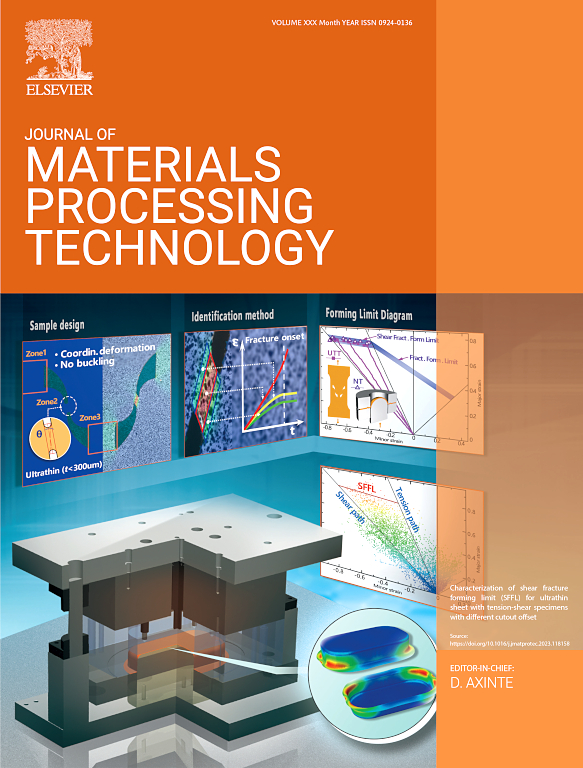Investigation on the machining mechanism and quality of an ice-coated drilling method for thin-walled parts
IF 6.7
2区 材料科学
Q1 ENGINEERING, INDUSTRIAL
Journal of Materials Processing Technology
Pub Date : 2025-01-27
DOI:10.1016/j.jmatprotec.2025.118743
引用次数: 0
Abstract
The drilling of thin-walled parts often encounters serious issues, such as low machining dimensional and geometric accuracy, thus compromising the integrity of the hole wall surface and subsurface layer. These issues are major constraints in achieving high-quality and high-precision manufacturing in aerospace and other industries. This study proposes an innovative ice-coated drilling (ICD) method for thin-walled parts and delves into the discussion of its machining mechanism. Four typical aerospace materials with thin-walled parts were selected as the research objects. The influence of different processing methods on machining quality was comprehensively evaluated by comparing and analyzing the performance of traditional drilling (TD) and ICD in terms of the flatness, parallelism, roundness, diameter error, axial force, torque, hole wall, and chip morphology of the hole. Results show that ICD remarkably improves the flatness and parallelism of the four thin-walled parts through the cooling effect and auxiliary support function of the ice layer, and it optimizes the roundness and diameter error of the hole. Moreover, the hole wall is smooth without defects, the height of the outlet burr is greatly reduced, and the overall machining quality is remarkably improved. In addition, the presence of the ice layer not only reduces axial forces and torque but also enhances residual compressive stress. The effects of different machining methods on cutting temperature were further analyzed, and the mechanism of ICD to suppress the heat-affected zone (HAZ) was elucidated. This study provides a novel and efficient solution to the challenges of machining thin-walled parts in manufacturing fields, such as aerospace.
求助全文
约1分钟内获得全文
求助全文
来源期刊

Journal of Materials Processing Technology
工程技术-材料科学:综合
CiteScore
12.60
自引率
4.80%
发文量
403
审稿时长
29 days
期刊介绍:
The Journal of Materials Processing Technology covers the processing techniques used in manufacturing components from metals and other materials. The journal aims to publish full research papers of original, significant and rigorous work and so to contribute to increased production efficiency and improved component performance.
Areas of interest to the journal include:
• Casting, forming and machining
• Additive processing and joining technologies
• The evolution of material properties under the specific conditions met in manufacturing processes
• Surface engineering when it relates specifically to a manufacturing process
• Design and behavior of equipment and tools.
 求助内容:
求助内容: 应助结果提醒方式:
应助结果提醒方式:


